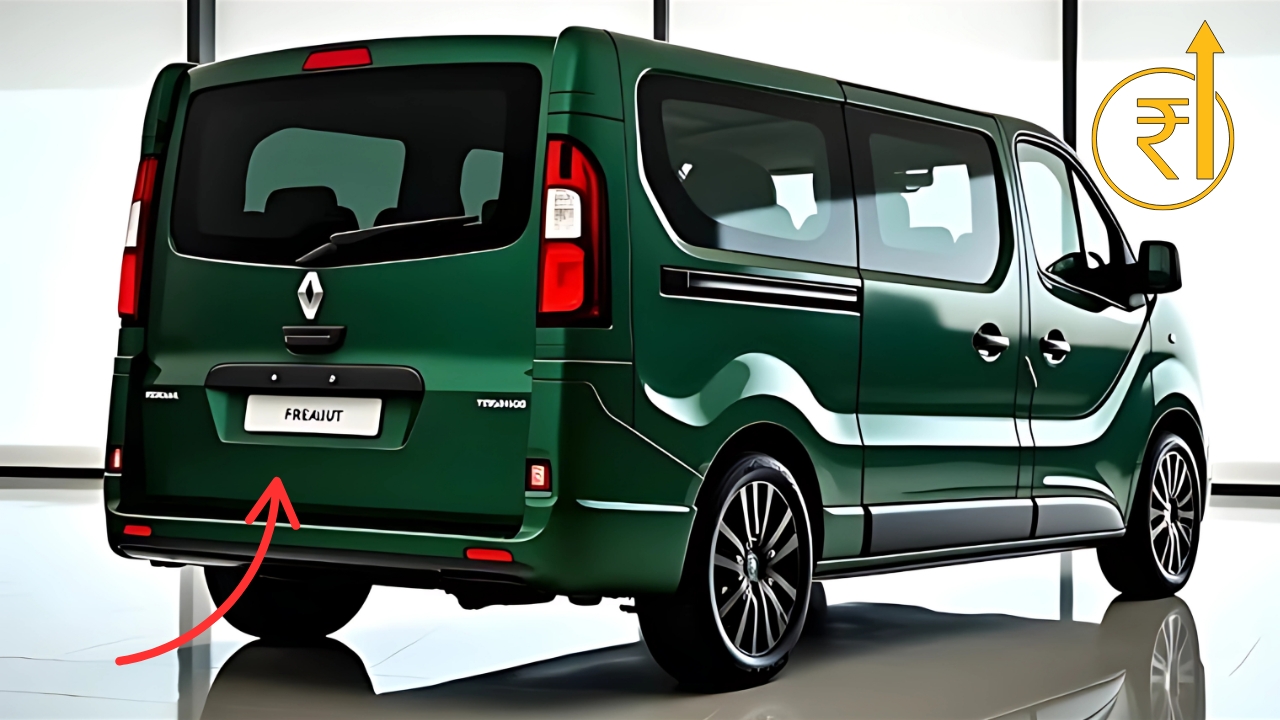The 2025 Renault Trafic has arrived, bringing a refreshed take on a van that’s been a staple for businesses and adventurers since 1980. This latest iteration combines practicality, modern safety tech, and a touch of flair, making it a compelling choice in the competitive mid-size van market.
Whether you’re a small business owner needing a reliable workhorse or someone seeking a versatile vehicle for family or leisure, the 2025 Renault Trafic promises to deliver.
In this article, we’ll dive into the updates, features, pricing, and everything else you need to know about this revamped van, all while keeping things engaging and approachable.
A Legacy of Adaptability
The Renault Trafic has long been a favorite for its ability to adapt to diverse needs, from plumbers hauling tools to families embarking on road trips. The 2025 model builds on this legacy with thoughtful upgrades that enhance safety, convenience, and efficiency.
I remember chatting with a friend who runs a landscaping business; he swore by his old Trafic for its spacious cargo area and smooth ride on rural roads. The 2025 version seems poised to win over even more fans with its blend of modern tech and practical design.
What’s New for 2025?

The 2025 Renault Trafic isn’t a complete overhaul but a strategic refresh that keeps it competitive against rivals like the Toyota HiAce, Ford Transit Custom, and Hyundai Staria Load. Renault has focused on three key areas: safety, interior functionality, and subtle design tweaks. The result is a van that feels more like a mobile office or a comfortable cruiser than ever before.
Enhanced Safety Features
Safety is a big deal for the 2025 Trafic, and Renault has gone all-in to ensure drivers and passengers feel secure. One standout feature is the Advanced Driver Assistance Systems (ADAS) shortcut button, a first for vans in Australia.
Located near the steering column, this button lets drivers toggle multiple safety features on or off with a single press—a game-changer for those who find some systems intrusive. Imagine being on a tight delivery schedule and not having to fumble through a touchscreen menu to disable lane-keep assist; it’s a small but practical touch.
The van now includes a driver attention monitor to detect fatigue, pedestrian and cyclist detection for its autonomous emergency braking (AEB) system, and a “QR rescue code” for emergency responders. These upgrades have earned the Trafic a ‘Gold’ rating from ANCAP, a testament to its crash-avoidance capabilities.
Standard safety features across all models include AEB with car-to-car detection, lane departure warning, and automatic bi-LED reflector-style headlights. Optional features like adaptive cruise control, blind-spot monitoring, and traffic sign recognition are available on higher trims or as part of option packs.
Interior Upgrades for Productivity
Step inside the 2025 Trafic, and you’ll notice Renault’s emphasis on making the cabin a functional workspace. The Pro variant now comes with a factory-fitted steel bulkhead with a glazed window, offering better visibility and safety. A fold-down workstation built into the middle seat is a clever addition, complete with a laptop storage compartment and an upright document holder.
I can picture a contractor pulling over to jot down notes or check plans without needing a separate desk—this kind of feature makes the Trafic feel like a true mobile office.
Higher trims, like the Premium and Lifestyle models, get a 7-inch digital instrument display, while chrome trim and under-seat storage add a touch of refinement to the Crew and Lifestyle variants. The infotainment system has also been updated, with an 8-inch touchscreen standard on most models, supporting Apple CarPlay, Android Auto, and Bluetooth connectivity. However, some reviews note the system can be sluggish, so don’t expect lightning-fast responses when connecting your phone.
Subtle Design and Efficiency Tweaks
On the outside, the 2025 Trafic sports updated Renault badges and a sleeker, more aerodynamic profile that improves fuel efficiency. The van’s dimensions remain practical, with lengths ranging from 5080mm to 5480mm, heights from 1967mm to 1971mm, and a consistent width of 1956mm. Cargo capacity is impressive, offering up to 8.9 cubic meters, with a load-through bulkhead allowing for items up to 4.15 meters long—the best in its class.
Under the hood, the Trafic sticks with a reliable 2.0-liter four-cylinder turbo-diesel engine, delivering 125kW of power and 380Nm of torque. You can choose between a six-speed manual or a dual-clutch automatic (EDC), both driving the front wheels. Fuel consumption ranges from 6.5 to 7.2 liters per 100km, depending on the model, and Renault’s ECO mode can boost efficiency by up to 7%. Maintenance is straightforward, with service intervals every 12 months or 30,000km, backed by a five-year, unlimited-kilometer warranty.
Pricing and Variants

The 2025 Renault Trafic comes in seven variants, catering to different needs with short- and long-wheelbase options, manual or automatic transmissions, and three- or six-seat configurations. Prices have seen a modest $490 increase across the range, reflecting the added features. Here’s a breakdown of the key variants and their starting prices (excluding on-road costs):
|
Variant |
Wheelbase |
Transmission |
Seating |
Price (AUD) |
|---|---|---|---|---|
|
SWB Pro Manual |
Short |
Manual |
3 | $49,490 |
|
SWB Pro Auto |
Short |
Automatic |
3 | $51,990 |
|
LWB Pro Manual |
Long |
Manual |
3 | $51,490 |
|
LWB Pro Auto |
Long |
Automatic |
3 | $53,990 |
|
SWB Premium |
Short |
Automatic |
3 | $55,990 |
|
LWB Premium |
Long |
Automatic |
3 | $57,990 |
|
LWB Crew Lifestyle |
Long |
Automatic |
6 | $63,490 |
These prices position the Trafic as a premium option compared to some rivals, but the added safety and convenience features justify the cost for many buyers. For context, a comparable Toyota HiAce starts slightly lower, but the Trafic’s refined driving dynamics and modern tech give it an edge for those willing to spend a bit more.
Driving Experience and Practicality
The 2025 Trafic is designed to be more car-like to drive, with responsive steering and a suspension that handles bumpy roads well. It’s not quite as polished as the Ford Transit Custom, but it’s on par with the Citroën Dispatch and Peugeot Expert. The cabin’s ergonomic layout, with a high driving position and ample visibility, makes long drives less fatiguing. The optional dual-clutch automatic is smooth, and the manual gearbox offers a positive clutch action, making it easy to navigate tight urban streets or open highways.
For businesses, the Trafic’s versatility shines. The load-through bulkhead and 255-degree rear door access make loading and unloading a breeze, while the 552mm loading height is practical for frequent cargo handling. The van’s towing capacity of 2500kg (braked) is competitive, and its 160mm ground clearance ensures it can handle light off-road conditions—a boon for tradespeople working in rural areas.
Why Choose the 2025 Renault Trafic?
The 2025 Renault Trafic stands out for its blend of safety, functionality, and style. The ADAS shortcut button is a thoughtful touch, especially for drivers who prefer control over automated systems. The interior upgrades, like the fold-down workstation, cater to professionals who need a mobile office, while the spacious cargo area and flexible seating options make it ideal for a range of uses. Yes, the price is a bit higher than some competitors, and the infotainment system could be snappier, but the overall package feels polished and purposeful.
I recall a delivery driver I met who raved about his Trafic’s reliability and comfort compared to his old Hyundai iLoad. He said the Renault felt like a step up, almost like driving a car rather than a van. For small business owners, fleet managers, or even families looking for a versatile vehicle, the 2025 Trafic offers a compelling mix of modern features and proven durability.
FAQs
What is the starting price of the 2025 Renault Trafic?
The base model, the SWB Pro Manual, starts at $49,490 before on-road costs.
Does the 2025 Trafic have an electric option?
Yes, the Renault Trafic E-Tech is an all-electric variant with a 52kWh battery and a 149-mile range, though availability may vary by market.
What safety features are standard?
Standard safety features include autonomous emergency braking, lane departure warning, driver attention monitor, and automatic bi-LED headlights.
What is the towing capacity?
The 2025 Renault Trafic can tow up to 2500kg (braked) and 750kg (unbraked).
The 2025 Renault Trafic is a well-rounded update to a trusted name in the van world. With enhanced safety features, a practical and tech-savvy interior, and a design that balances style and efficiency, it’s ready to tackle the demands of modern businesses and beyond. While the price bump might raise eyebrows, the added value in safety and convenience makes it a worthy contender. Whether you’re hauling cargo or passengers, the Trafic delivers a refined experience that’s hard to beat.

